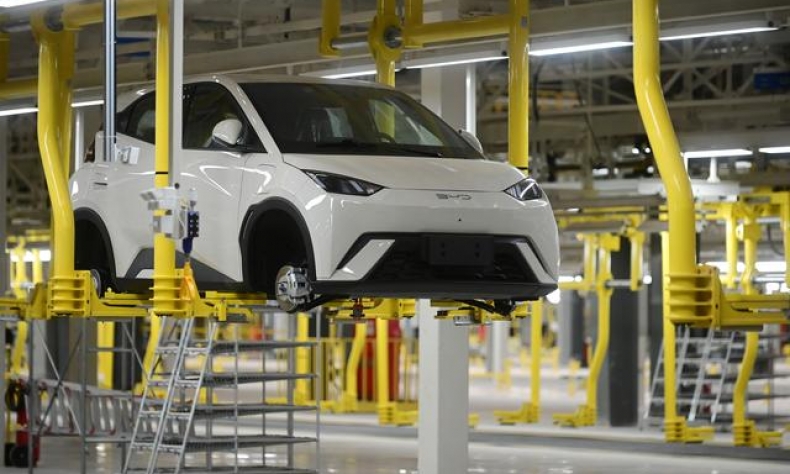The Electrification of Brazil’s Mobility Sector

In this story, Brazil does not have to stand by. It can shape the future and choose to be a protagonist.
Brazil is beginning to change how it moves. The shift to electric mobility is not only about cleaner vehicles; it is about rethinking industry, energy and opportunity. In this transformation, China has emerged as a key partner, offering investment, technology and a long-term vision.
One local story reflects this pivot.
When U.S. car manufacturer Ford shut down its factory in Camaçari in Brazil’s northeastern state of Bahia in 2021, this was about more than the loss of jobs. It symbolized the end of an era for the country’s automotive sector. The closure reflected the exhaustion of an old industrial model and left a void in a region that has long faced economic inequality compared to Brazil’s more industrialized southeast.
Now, on the same land, a different chapter is unfolding. In early July, Chinese automaker BYD began pre-series assembly of electric and hybrid vehicles at its new factory in Camaçari.
This facility is not just assembling cars. It is building skilled jobs, training local workers and offering a new model of industrial cooperation between Brazil and China.
More than 2,000 workers have already been hired for the first production phase, many of them from Camaçari and nearby towns. Local vocational institutes have partnered with BYD to offer technical training programs focused on electric mobility and battery systems. The company has also engaged with Brazilian suppliers to develop a domestic network for parts and components, encouraging knowledge transfer and boosting regional industry.
The factory is expected to reach a production capacity of 300,000 electric and hybrid vehicles per year by 2026, and includes lines for buses, trucks and battery processing. It represents one of China’s most important industrial investments in Latin America to date.

This development is part of a broader shift in how China engages with Brazil’s green transition.
Brazil has emerged as the top global importer of Chinese vehicles in recent years, with electric and hybrid models leading the surge. In 2024, electric vehicle sales in Brazil surged 85 percent year on year, as per the Brazilian Electric Vehicle Association.
Chinese automakers are now pivoting from exports to local production, investing in Brazilian supply chains, charging infrastructure and long-term industrial partnerships—a strategic shift that could reshape Latin America’s auto landscape.
This shift is especially important because of where it is happening. Rather than focusing solely on Brazil’s economic core in the southeastern part of the country, Chinese investors like BYD are helping bring advanced manufacturing to historically underserved regions. Camaçari, once a symbol of industrial decline, is now becoming a hub of green innovation. This narrows regional gaps and repositions the northeast as part of Brazil’s new industrial future.
BYD also maintains a research and development center in Campinas, a major technology and university hub in the state of São Paulo. From there, the company coordinates projects related to energy storage, solar integration and intelligent transport solutions, reinforcing its broader role as a provider of clean technology infrastructure beyond just vehicle manufacturing.
This model of cooperation goes beyond economics. It aligns with Brazil’s goals of reindustrialization, climate resilience and inclusive growth. It also mirrors a broader trend in South-South collaboration, where developing countries work together to build capacity, share technology and pursue common interests.
Yet challenges remain. Brazil still does not have a unified national strategy for fleet electrification. Charging infrastructure is uneven, public incentives are limited and local automakers are under pressure to adapt to global technological shifts. Chinese partnerships cannot solve all of these challenges, but they can help accelerate progress by bringing investment, scale and practical experience to the table.
Camaçari now stands as a symbol of this potential. Once marked by uncertainty, it is being reimagined as a center of clean industry. The cooperation taking shape there offers a model of how innovation, inclusion and international partnership can come together in ways that benefit both sides.
Brazil’s future in electric mobility will not be shaped by declarations alone. It will depend on real investments, coherent policies and a willingness to integrate regions that were once left behind. With the support of committed partners like China, the country has a chance to lead in Latin America’s energy transition while addressing long-standing inequalities at home.
What began in Camaçari as a quiet closure may now be remembered as the start of something far more powerful. In this story, Brazil does not have to stand by. It can shape the future and choose to be a protagonist.
The author is a Brazilian scholar of international relations.
 Facebook
Facebook
 Twitter
Twitter
 Linkedin
Linkedin
 Google +
Google +










